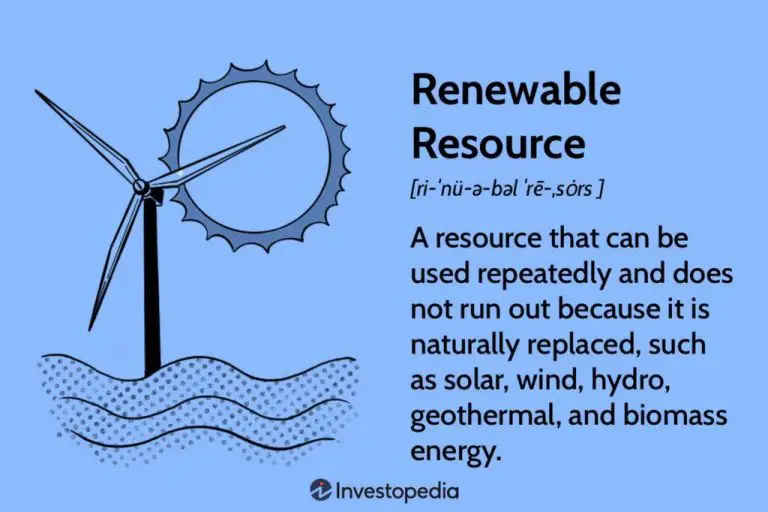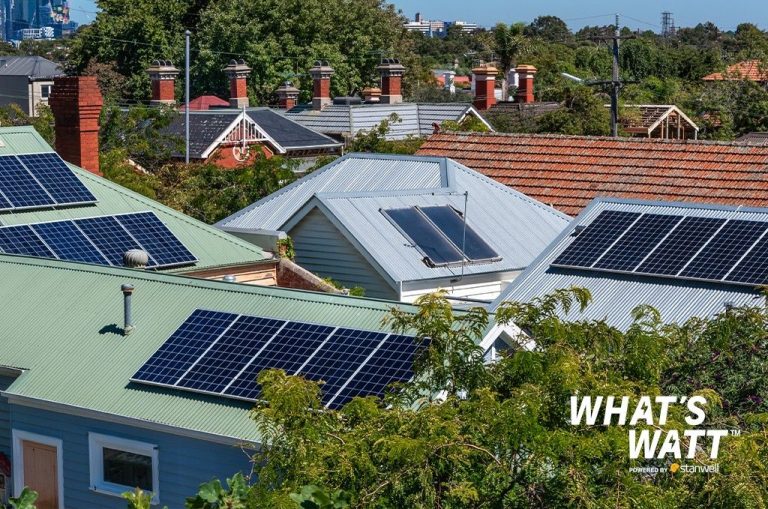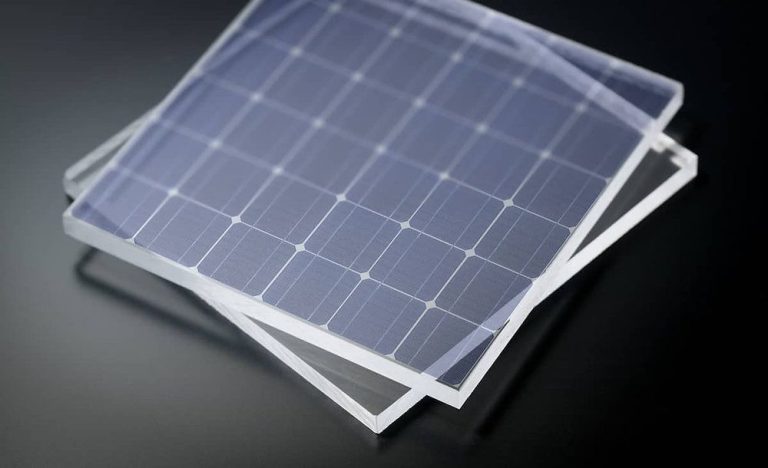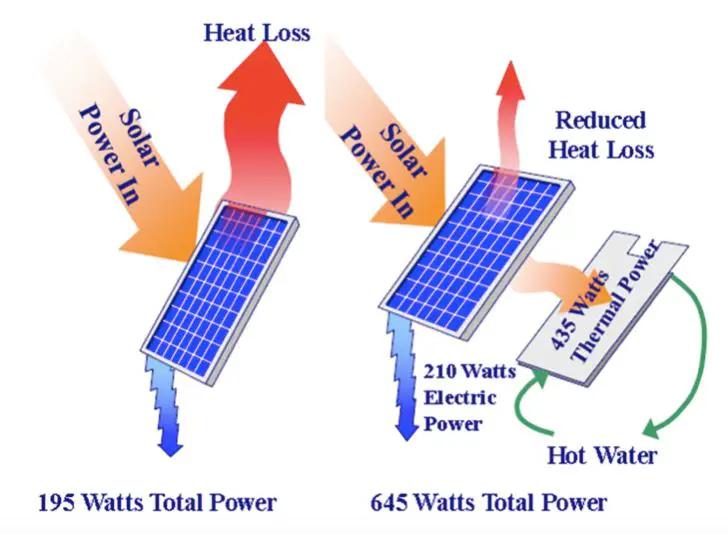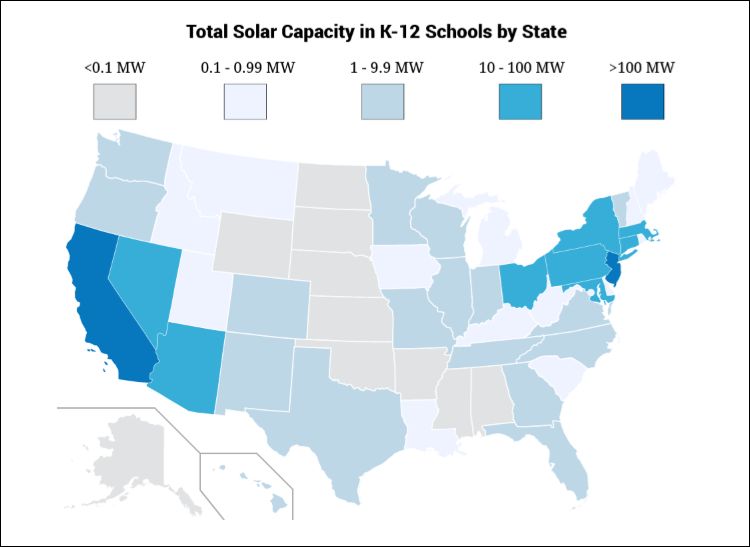Is Solar Energy Used To Produce Heat?
Solar thermal energy involves using the sun’s heat and light to provide hot water, space heating, cooling, electricity generation, and industrial applications. It captures the heat from solar radiation using solar collectors and converts it into useful forms of energy. Unlike solar photovoltaics, which convert sunlight directly into electricity, solar thermal relies on heat transfer.
Solar collectors absorb the sun’s light, convert it into heat and transfer that heat to a fluid (usually water or air). The heated fluid can then be used directly for hot water or space heating, or to drive a generator to produce electricity. Some key uses of solar thermal energy include:
In this article, we will explore how solar thermal energy is commonly used to produce heat for various residential, commercial and industrial applications.
Solar Water Heating
Solar water heating is the most widespread direct use of solar energy. Solar water heaters rely on the sun to heat either water or a heat-transfer fluid which is then used to heat water. The heated water can be stored in a tank or circulated directly when there is a hot water demand. Solar water heating systems are most commonly used for domestic water heating, to supplement conventional water heaters or heat water directly.
According to the Energy Information Administration, there were approximately 2.3 million active solar water heating units in the United States in 2019, among residential and commercial installations [1]. This represented a solar thermal collector area of over 35 million square feet.
Solar water heating systems use solar collectors, usually mounted on the roof, that heat either water or a heat-transfer fluid that passes through the collectors. The collectors are either flat plates (the most common type) or evacuated tubes. The heated water is then stored in a hot water tank until needed. When hot water is needed in the home, cold water passes through the solar storage tank where it is preheated before going to the conventional water heater. This allows the conventional system to spend less energy heating the water the rest of the way to the desired temperature. The conventional heater only runs when the preheated water is not hot enough.
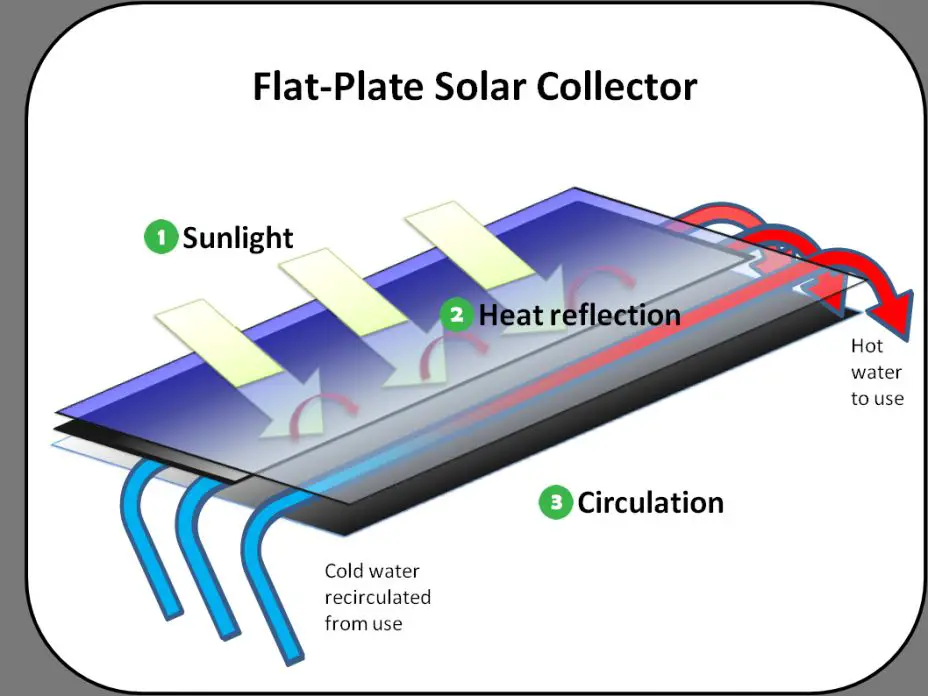
Solar Space Heating
Solar thermal energy can be utilized to heat buildings, playing a role in space heating systems. Both passive solar building design and active solar heating systems can employ solar energy for space heating residential and commercial buildings.
Passive solar space heating involves orienting the building to maximize solar gain from the sun and utilizing design techniques like large south-facing energy efficient windows, heat absorbing materials with thermal mass, window overhangs for summer shading, and good insulation to reduce heat losses. These passive solar principles enable the structure itself to collect, store, and distribute solar energy for space heating during cooler weather. [1]
Active solar space heating uses devices like solar collectors, pumps, and fans to absorb solar heat and transfer it to a fluid that can heat interior spaces or water tanks for space heating. Active systems typically use air or liquid as the heat-transfer medium. Solar air systems use fans or blowers to circulate air through the collectors, heating the air that is then distributed to the building. Solar liquid systems pump heat transfer fluids like water or antifreeze through collectors, store the heated liquid in tanks or rock beds, and use this stored solar heat for space heating. [2]
Active solar heating systems can supplement conventional heating systems and reduce fossil fuel use or offset all space heating needs when properly sized and designed. Solar heating is most cost-effective when displacing expensive heating fuels like electricity, propane, or heating oil. Though solar space heating entails an upfront equipment investment, it provides long-term savings without ongoing fuel costs.
Solar Cookers
Solar cookers use sunlight as a heat source to cook food without burning fuels such as charcoal, wood, or gas. They are an eco-friendly and sustainable alternative to traditional cooking methods. There are several types of solar cookers designed for different needs:
Box cookers are the most common type of solar cooker. They consist of an insulated box with a glass or plastic top that traps heat inside to cook food. These cookers can reach temperatures up to 300°F. They work well for baking, boiling water, and stewing.[1]
Parabolic solar cookers use a dish-shaped reflector to concentrate sunlight onto a cooking pot in the focal point. They can reach extremely high temperatures up to 750°F and are well-suited for frying and roasting. However, they must be aimed directly at the sun.
Solar panel cookers use a reflective panel to direct sunlight to a cooking chamber. They fold up compactly for transport and require minimal adjustment while cooking.
The benefits of solar cooking include reducing dependency on traditional fuels, lowering fuel costs and indoor air pollution, and leaving a smaller carbon footprint. Solar cookers are especially impactful in developing regions. It’s estimated that over 3 million solar cookers are in use worldwide, helping millions of people cook their meals sustainably.[2]
Solar Distillation
Solar distillation is a common way to use solar thermal energy for water purification. This process uses the heat from the sun to evaporate contaminated water, leaving behind the impurities. The water vapor then condenses on the inside of a clear covering and collects as purified water. This is an effective, low-cost method of obtaining clean drinking water in many parts of the world.
One of the most basic forms of solar distillation is a solar still. Solar stills consist of a sloped basin of contaminated water under a transparent glass or plastic cover. As the sun heats the water, the resulting water vapor rises and condenses on the inside of the cover. The condensate runs down the sloped cover and collects in a corner for drinking. Solar stills are simple to construct out of common materials and can provide 2-4 liters of fresh drinking water per day depending on size, climate conditions, and solar radiation levels (Solar Water Distillation).
Advantages of solar distillation include the ability to treat water with high salinity or contamination, simplicity of operation with no reliance on electricity or consumables, and low cost compared to alternatives. Limitations include low production volumes and ineffectiveness in areas with diffuse solar radiation. Overall, solar distillation provides a valuable approach to utilizing solar thermal energy for water purification purposes.
Solar Cooling
Solar cooling refers to the use of solar thermal energy to provide cooling and refrigeration. There are several techniques that can be utilized to achieve efficient solar cooling:
Absorption Cooling Cycle – This uses a heat source (solar collectors) to provide energy to a chiller powered by an absorber-refrigerant pair like lithium bromide/water. The refrigerant vaporizes and condenses to produce cooling. Absorption chillers utilize heat to induce refrigerant evaporation rather than mechanical energy (Solar Cooling | How It Works, Components, Goals, Benefits …).
Desiccant Cooling System – This uses an adsorption material like silica gel to absorb moisture from air. The resulting dry air is then cooled through evaporation. The adsorption material is regenerated by using low-grade heat from solar collectors. (What is solar cooling? Definition from WhatIs.com.)
Solar Mechanical Cycles – This involves solar thermal collectors providing heat to drive a Rankine cycle or Stirling cycle heat engine. The engine then powers a vapor compression cycle for cooling and refrigeration.
Other methods like evaporative cooling, solar ponds, and Peltier cooling may also be used. Solar cooling is still an emerging technology but offers benefits like reduced electricity usage and integration of heating/cooling systems.
Industrial Applications
Solar thermal energy can be used for various industrial applications that require process heat, such as food processing, chemical production, mining, and textile manufacturing. According to IRENA, solar process heat technologies can provide low- and medium- temperature heat up to 400°C which covers around 80% of industrial heat demand (1).
Some key industrial applications for solar process heat include:
- Food processing – Solar thermal can provide heat for cooking, drying, pasteurization, sterilization, refrigeration, and freezing in the food industry.
- Chemical production – Solar heat can be used for soap production, polymer production, solvent recovery, and many other chemical processes.
- Mining – Solar thermal can provide process heat for the extraction and refining of metals and minerals.
- Textiles – Solar heat can power processes like dyeing, bleaching, drying, printing and washing in textile production.
- Agriculture – Solar thermal systems can dehydrate crops, heat greenhouses, and provide hot water for livestock operations.
- Laundries – Solar hot water can power industrial laundries and commercial laundry services.
- Car washes – Solar heat can provide hot water for car wash facilities.
Solar thermal systems for industry often use technologies like parabolic trough collectors, linear Fresnel reflectors, and evacuated tube collectors. Solar process heat systems can either directly heat the industrial process or can provide heat to the facility’s thermal distribution system (2). Significant opportunities exist for solar to meet industrial process heat demand in an economical and sustainable manner.
(1) https://www.irena.org/-/media/Files/IRENA/Agency/Publication/2015/IRENA_ETSAP_Tech_Brief_E21_Solar_Heat_Industrial_2015.pdf
(2) https://www.nrel.gov/analysis/solar-industrial-process-heat.html
Solar Thermal Power Plants
Concentrating solar power (CSP), also known as solar thermal electricity, generates electricity by using mirrors or lenses to concentrate sunlight onto a receiver. The concentrated sunlight heats up a fluid that is used to produce steam, which then spins a turbine to generate electricity.
The most common CSP technologies are parabolic trough systems and solar power tower systems. Parabolic trough systems use curved mirrors to focus sunlight onto a receiver tube running along the focal line of the trough. The heated fluid in the tube is then used to generate steam. Solar power towers use a field of flat mirrors (heliostats) that track the sun and focus sunlight onto a receiver atop a tower. The receiver heats up molten salt, which can then be stored and used to generate electricity when needed.
According to the International Energy Agency, global CSP capacity is expected to reach nearly 12 GW by 2023, up from 6.2 GW in 20211. Parabolic trough plants currently account for over 90% of installed CSP capacity, but solar towers are expected to grow to make up nearly 30% of capacity by 20231. CSP with thermal energy storage provides a dispatchable solar electricity source.
Challenges and Limitations
While solar thermal energy has many advantages, it also faces some key challenges and limitations that have constrained more widespread adoption, including:
Intermittency: Solar energy is only available when the sun is shining, and output varies depending on weather and time of day. This intermittency makes solar thermal impractical for 24/7 baseload generation without storage or backup power sources (Martín, 2022).
Energy Storage: Effective and affordable storage is needed to provide power when the sun isn’t shining. Existing storage options like molten salt add substantial costs and inefficiencies (Zheng et al., 2023).
High Capital Costs: While solar thermal has low ongoing fuel costs, the upfront system costs are still higher than conventional power generation. The levelized cost per kWh is not yet competitive in many locations (Kumar, 2022).
These challenges have limited solar thermal to niche applications so far. Continued innovation in storage, materials, and manufacturing will be key to enabling solar thermal to become a major sustainable energy source.
Conclusion
Solar thermal energy has a wide range of applications for heating water, spaces, and food. Some of the main uses covered here include:
- Solar water heating systems for residential and commercial use
- Solar space heating systems for heating interior spaces
- Solar cookers for cooking food
- Solar stills for distilling and purifying water
- Solar cooling technologies like absorption chillers
- Industrial process heating applications
- Concentrated solar power plants that generate electricity
While solar thermal systems have become more efficient and affordable over time, some challenges remain. The intermittent nature of sunlight and weather dependence can make solar thermal impractical in some climates. Upfront system costs are still higher than conventional heating fuels. However, with continuing advancements in materials, storage, and hybrid system design, the future looks bright for increased adoption of solar thermal energy worldwide.


